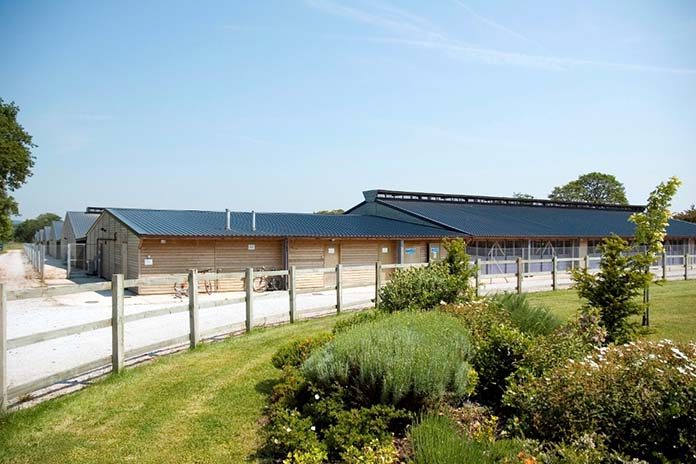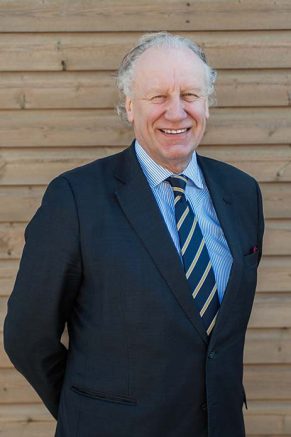
“It has been a great pleasure to have been involved in the turkey industry for the last 5 decades and to see the development of existing markets and the emergence of new markets across the globe. The turkey market is still concentrated in the Americas and Europe, the coming challenge is to establish demand in new areas of the World.” – Richard Hutchinson.

“Our colleagues in the Chicken industry are represented in almost every country and this should be our aim by the end of this century. Turkey meat offers value, taste, high protein, low fat, low cholesterol and fits easily in many classic meat dishes throughout the world. The turkey industry is moving forward in many established markets and gaining a foothold in new markets, initially promoted by meat imports and then by establishing local production units. Consumers relate to locally produced products and success and market growth are mainly achieved when production units are established and marketed preferably with a brand.”
“The turkey industry supply chain flows from the breeders through a number of multiplication phases which culminate in commercial birds being grown and processed and finally sold to the consumer. Breeders are at the start of this process and it typically takes around 4 years to move from pedigree to commercial birds. This means that the challenges of today had to be anticipated by the breeders 4 years ago and that the challenges for the future are being considered now. The turkey industry is evolving and we can see a number of changes in established markets and opportunities for developing markets.
Turkey production is focused on North America and Europe which represents 85 % of the total world output of turkey-meat. In Europe, 6 countries – Poland, Germany, France, Italy, Spain and the UK – represent over 87% of total turkey production of the E.U.”
“When we review the market over time we can look for pointers to future growth, both in existing markets and in developing markets. Where will the next opportunities arise to promote the eating qualities and nutritional value produced by our industry?
Our objectives are to analyse the turkey market worldwide and uncover some of the reasons where there has been significant market growth and highlight opportunities for growth. The turkey market worldwide is diverse and consumption levels range from 13.5 kg per capita per year to zero. Is there opportunity to mirror some of the success stories from consumption levels in Israel and the USA to other markets? Can the dramatic growth seen in Poland from 1990 to 2017 or Russia from 2006 to 2017 be expected in other central European countries? For all business growth there has to be investment and convincing of consumers.
Operating for a number of years in Europe and North America we can also see a large range in production systems, range of products and methods of eating and enjoying turkey meat. The key challenges for the Industry are to produce products which offer taste, quality, value for money, innovation and meet the market criteria of food safety and animal welfare. Consumers are healthier and living longer and opportunities exist to meet their changing dietary needs. Closer analysis of demographic changes will assist in how we target various products. Convenience and value are becoming more prized in our societies.”
“Consumers also want a say in how their food is produced. Food accounts for a much bigger proportion of inflation in developing countries and food prices are currently rising fast due to rising demand and limited supply. Population growth, rising affluence, changing diets and the demand for meat proteins are all driving agriculture demand.
Globally there are 3 key factors driving organic demand: population growth, demand for convenience food, improved disposable income. Urbanisation and rising affluence are creating a great opportunity to introduce new innovative products. Market regions such as China, India and Brazil are following in the footsteps of their Western counterparts, increasing calorific intake and changing their diets demanding more meat and dairy products.
The demand for more protein has a multiplied effect on grain production. Livestock is reared on grain, feed production is heavily resource intensive and it takes seven kilos of grain to produce 1 kilo of beef, 2.45 kilos of grain and falling for 1 kilo of live turkey. Greater production efficiencies can bring increased output and savings on land usage.”
“In the early seventies the major producers were the USA, Italy, Germany, France and the UK. Since that time large turkey production companies have developed in Brazil, Poland, Russia, Spain and North Africa. The industry in Brazil began developing in 1990, North Africa in 1996, Poland 1990. Where will development be in the next 10 to 20 years?
Our quest as primary breeders is to assist existing producers to improve efficiency and to create healthy low cost meat which conforms to consumer demands. There are many opportunities to expand the turkey business built on the value and versatility of turkey meat. We look forward to further expansion where turkey meat is well established and developing new projects to feed an ever increasing world population”.
From the Proceedings of the 12th Turkey Science and Production Conference
















